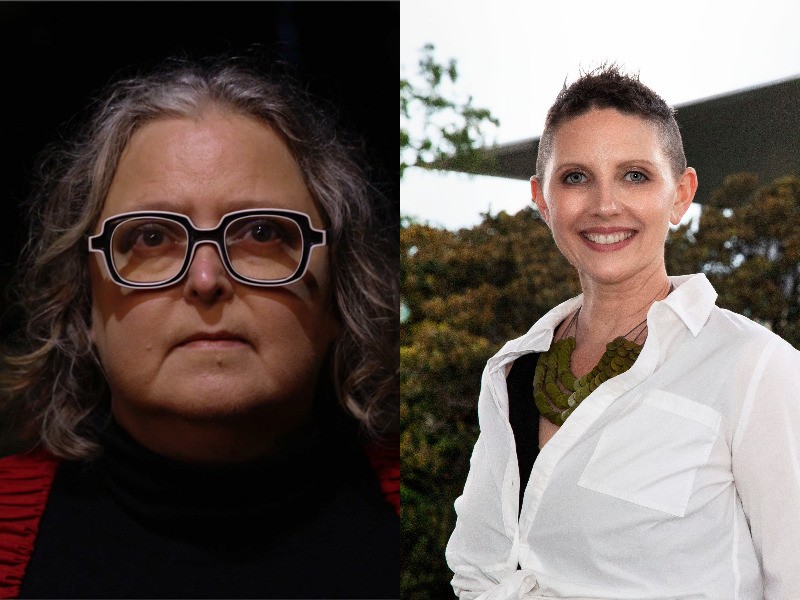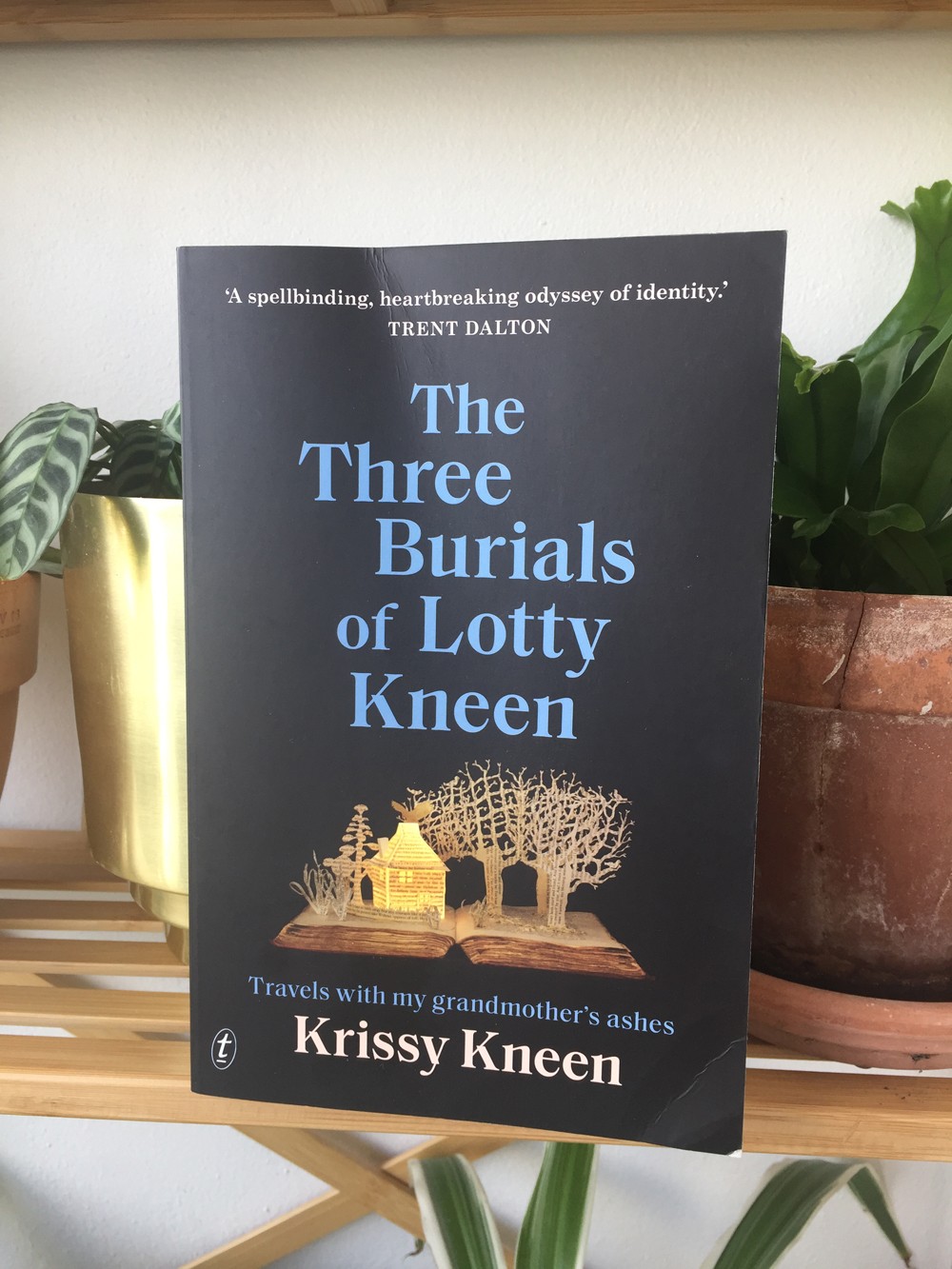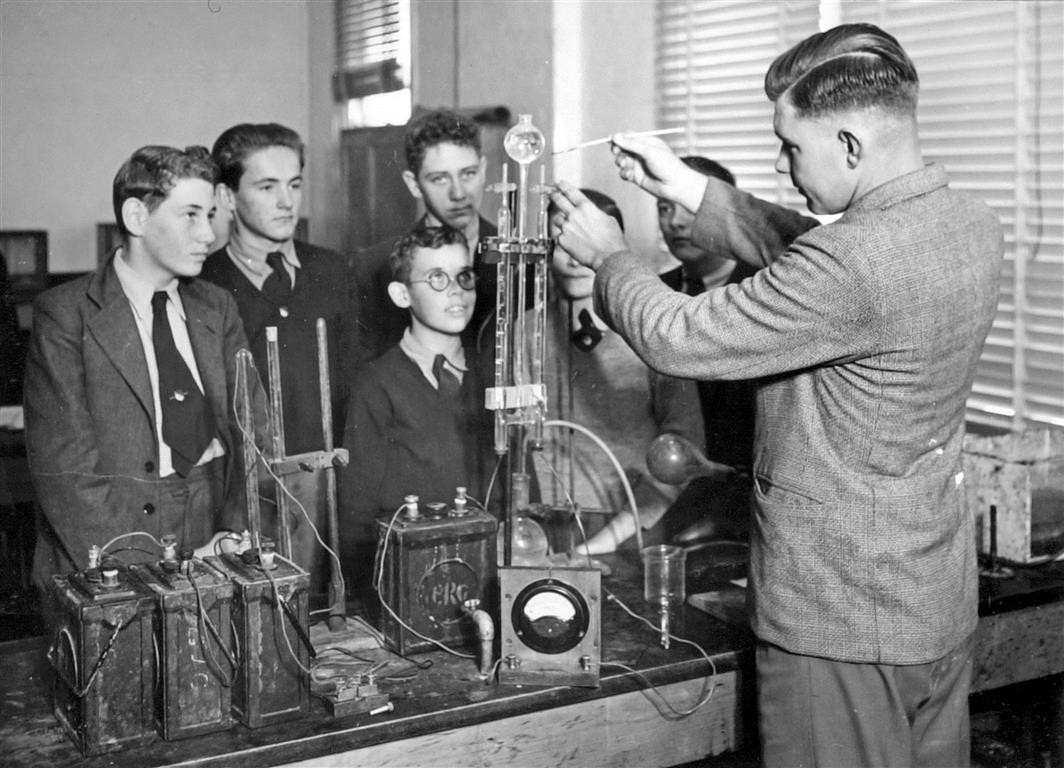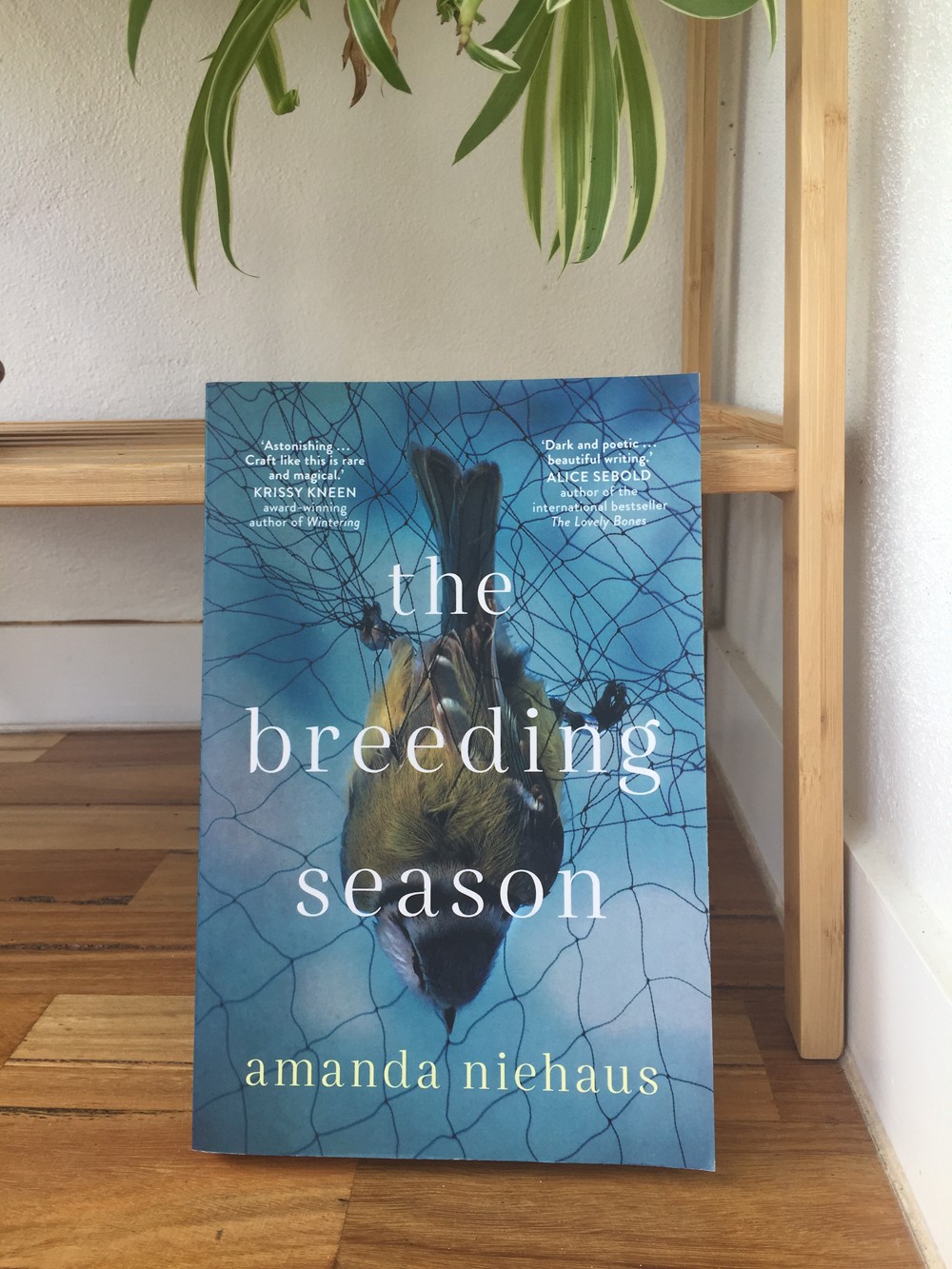The puzzle of our lives: creative writing in National Science Week
By Reading and Writing | 19 August 2021
Happy National Science Week! To celebrate, we spoke to two of our favourite Brisbane writers who weave science and scientist characters into their creative writing.
Krissy Kneen and Amanda Niehaus are both award-winning novelists with sharp and curious eyes for exploring scientific concepts through their fiction. Here, they discuss what inspires them, how they love to push their brains into "uncomfortable directions", and how science and creative writing are never far apart.

Brisbane-based superstar writers and science lovers Krissy Kneen and Amanda Niehaus
Krissy Kneen
How does science affect your creative life?
Science impacts on my life and my work in so many ways. When other people turn to meditation, I turn to astronomy. Thinking about the universe on a macro scale helps me to find perspective on a micro level. It is a strange trick of scale that makes me realise I am insignificant, which also puts all my small problems back in their tiny little boxes. I think keeping one eye on the universal is something that naturally invades my writing. Science gives me a way of looking at the world through a different lens.
My enjoyment of New Scientist magazines led me to write An Uncertain Grace, a novel posed the question: How can we use technology for good in a future world? I've looked at the incredibly challenging world of quantum physics, and also looked closely at my body on a micro-level through genetics and gut bacteria in The Three Burials of Lotty Kneen.
Recently I've been deep-diving into mushrooms for a new book I am writing about how mushrooms can save the world. I am also writing a book based around my own body that looks at fatness and its effects on my mental and physical health as well as my place in a culture that equates thinness with moral fortitude. Of course my love of science is woven into this book too.

Krissy's new novel is about finding her grandmother, and her family's past, on the other side of the world
Where did your love of science and writing begin?
Often we think of science as something separate to our own lives – as though science is something we do. But science is actually just a different way of looking at our lives. It is that trick of scale. We can look intimately at our bodies through biology, or look outward towards the stars to see how we fit into the universe. When so much of writing is trying to find a new perspective on life as it is, the micro and macroscope of scientific disciplines is a rich lens through which to examine our everyday world.
I suppose my love of science came from my early readings of Asimov, Stanisław Lem and Robert Heinlen who were novelists and science fiction writers but also scientists in their own right. I always knew I would be a writer and these luminaries of science fiction taught me how science fiction didn't have to just be imaginative, it could be based on real science too.
I do love reading books that incorporate science into their imaginative worlds and Ted Chiang is one of my favourite writers in this area. I like how Jeanette Winterson is not afraid to look at scientific studies like artificial intelligence in her most recent books. And I love nature writers like Merlin Sheldrake and Robert Macfarlane who knit culture and science so seamlessly into their books.

A group of students and their teacher at Industrial High School, Brisbane, Science Class, April 1951 (Queensland State Archives Digital Image ID 1638)
Amanda Niehaus
What do you love about weaving science into your fiction?
To me, the best scientific ideas are like the best paintings – they make your heart stop in your chest for a second, and in that second, you get a sense of all the possibility: What is that? What does it mean? What could it mean? And then, suddenly, you’re writing a story.
In my PhD in biology, I used to raise tadpoles in little containers of water, and it was important to ensure all the containers had the same number of tadpoles and amount of food, etc, so that the only difference between the containers was the temperature I kept them at. That way, I could be pretty sure any differences in the growth or development of the tadpoles was due to those temperature differences rather than some other factor. I had some lovely results I could plot on a graph, but I’ll be honest – I love writing fiction because you get to immerse the most hard-edged scientific fact in a soup of context and complication, and see all the sides at once: murky, like real life.
Say, for example, the tadpole scientist has fallen in love with this guy in her lab, and she thinks about him while she’s in there feeding spinach to her animals. Suddenly she sees that those tadpoles growing in stable temperature conditions are like her former life, like her relationship with this perfectly fine but super-predictable guy, and the tadpoles growing at temperatures that change a lot are her potential future, unknown and volatile, with this new guy**. The science hasn’t changed, but she’s perceiving it in a completely different way. Stories take us in there, into that humid room that smells like digested spinach, and help us understand how science fits into the puzzle of our lives.
**The tadpole scientist married the ‘fluctuating’ guy, by the way, and they have a lovely daughter and two chihuahuas together.

Amanda's novel about loss and love within a marriage was a finalist in the 2020 Queensland Literary Awards
My first novel, The Breeding Season, was very much about research I’ve contributed to in some way—on winter songbirds, shorebirds, antechinuses, quolls. I wove these experiences and the science of reproduction into the story of a young scientist Elise, who was grieving the death of her baby. It was easy to write about the places and methods and science because I knew it, often firsthand. Ok, not easy, but less hard.
My next novel-in-progress, 'Relativity', is altogether different. This book deals a lot with the physics of time, which is pushing my brain in very uncomfortable directions. But through my research, I hope to understand enough that I can approach time from multiple angles – ageing, sadness, memory, inheritance – and use different writing techniques to play with the speed of time, or the recurrence of events. I just realised I’m doing the research so that hopefully you’ll never see it in the final product.
Which is what the best science in fiction does, now that I think of my favourite authors: Ted Chiang (My favourite stories of his are 'Story of Your Life', 'The Merchant and the Alchemist’s Gate'). Alan Lightman (Einstein’s Dreams). Krissy Kneen, Yoko Ogawa (The Housekeeper and the Professor) and Sarah Hall (The Wolf Border).
Both Krissy and Amanda love the work of American writer Ted Chiang
Krissy Kneen is a multi-award winning teacher, screenwriter, and author of nine books of memoir, short stories, fiction, and poetry. Her novel An Uncertain Grace was shortlisted for the 2018 Stella Prize. Krissy won the Thomas Shapcott Prize for Poetry for her collection Eating My Grandmother. She has written and directed broadcast documentaries for SBS and ABC Television. Krissy's latest book is The Three Burials of Lotty Kneen.
Amanda Niehaus is a writer, scientist, and author of the novel The Breeding Season – a story of resilience based on the reproductive biology of northern quolls. Her essays and stories have been published in Griffith Review, Overland, The Guardian, Creative Nonfiction, Best Australian Essays, and more, and she won the 2017 Victoria University Short Story Prize. She is co-founder of the Science Write Now website and network, which showcases creative writing about science. Amanda can be found online @amandacniehaus and at amandacniehaus.com
Comments
Your email address will not be published.
We welcome relevant, respectful comments.